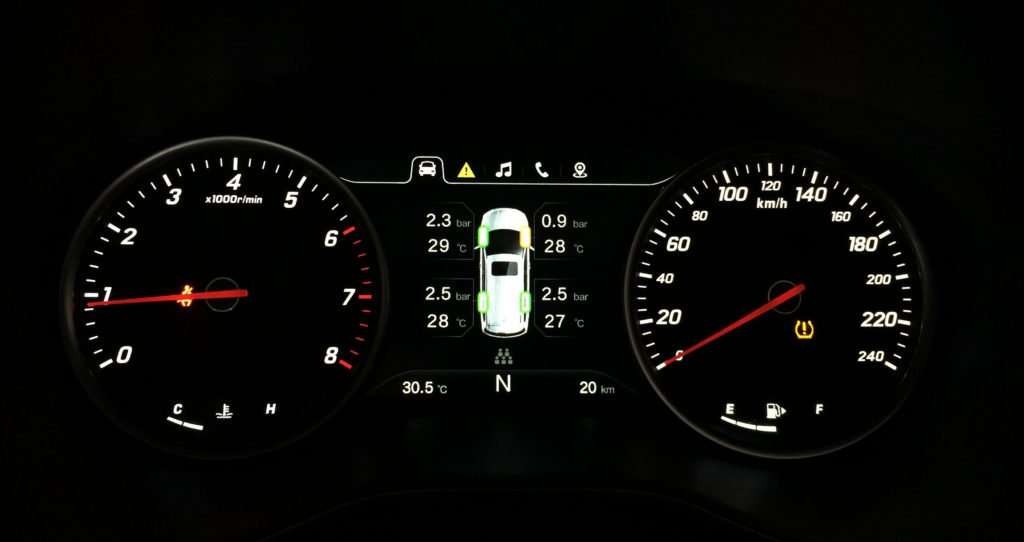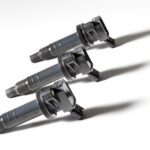Many terms in the automotive world can be confusing for the average driver. You might be familiar with terms like “speedometer,” but have you ever wondered, What Does Odo Mean On A Car? The term “odo” is short for odometer, a crucial instrument located on your car’s instrument cluster.
The instrument cluster panel is a vital part of your vehicle, providing essential information about its operation. It’s designed to keep you informed about your car’s condition while you’re driving, enhancing both safety and convenience.
Typically positioned behind the steering wheel, the instrument cluster houses various indicators that drivers need to understand for a safer and more comfortable driving experience. While some newer models are placing these panels on the dashboard, the core function remains the same. Let’s delve deeper into understanding what the odometer means on your car, its functions, and how it operates.
What is a Car Odometer?
The odometer is a gauge that records the total distance a vehicle has traveled. Without an odometer, it would be nearly impossible for drivers to accurately track their car’s mileage. This is why understanding what does odo mean on a car is so important for vehicle owners.
You’ll usually find the odometer conveniently located on the car’s dashboard meter panel. This placement allows drivers to easily monitor it. Often, the odometer is situated near other essential gauges like the tachometer, which measures engine rotation speed, and the speedometer, which indicates the vehicle’s current speed.
Car Odometer Functions You Need to Know
Without an odometer, drivers would be in the dark about their car’s mileage. The odometer serves as a crucial tool for measuring distance traveled, providing valuable insights into a car’s usage and history. Understanding what does odo mean on a car also means understanding its vital functions. By knowing the mileage, you can gauge how much your car has been used and its overall wear and tear.
Checking the odometer is particularly important when considering purchasing a used car. A high mileage reading typically indicates more wear and tear compared to a vehicle with lower mileage. Therefore, the odometer reading is a key factor in assessing the condition and value of a used vehicle.
The odometer also serves as a practical reference for routine car maintenance, particularly for scheduling service appointments and engine oil changes. Odometer readings are displayed in kilometers (km) or miles, depending on the region. The numbers you see on the odometer represent the total distance your car has covered.
When buying a used car, always pay close attention to the odometer. Opting for a car with a lower odometer reading often means you’re getting a vehicle that hasn’t been subjected to as much wear and tear from extensive use.
How Does The Car Odometer Work?
Now that you know what does odo mean on a car and its functions, let’s explore how it actually works. Car odometers operate using two primary methods: mechanical and electronic. Before buying a used car, understanding the workings of both types can be beneficial in assessing the vehicle’s condition and history.
1. Mechanical or Analog Odometer
Mechanical odometers, commonly found in older vehicles, operate using a rotating force transmitted through a flexible cable connected to the car’s transmission. This mechanical rotation drives a series of gears and drums that display the mileage reading.
A characteristic of mechanical odometers is that they can be rolled back or tampered with. In some cases, they might even count down when the car is reversed due to the gear mechanism. However, this rollback during reverse is generally minimal.
When inspecting a used car with a mechanical odometer, look for signs of tampering. Irregularities, scratches around the odometer casing, or misaligned digits can indicate potential odometer fraud. A careful inspection can help you determine if the odometer has been manipulated.
2. Electronic Odometer
Electronic odometers represent the modern approach, relying on sophisticated technology and computerized systems. These odometers calculate distance using signals from sensors, often located in the car’s wheels or transmission. A common method involves a magnet placed on a wheel frame, generating pulses as the wheel rotates. These pulses are then interpreted by the car’s computer to calculate and display the distance traveled.
Electronic odometers are generally more accurate and less susceptible to tampering compared to mechanical versions. However, detecting manipulation in electronic odometers is more complex and often requires specialized equipment and expertise.
If you are considering a used car with an electronic odometer and have concerns about its accuracy, it’s advisable to have it inspected by a qualified mechanic or at an official service center. They possess the tools and knowledge to verify the odometer’s integrity.
Understanding what does odo mean on a car and how the odometer works is essential for car owners and especially for those in the used car market. Whether mechanical or electronic, the odometer provides crucial information about a vehicle’s history and usage.

